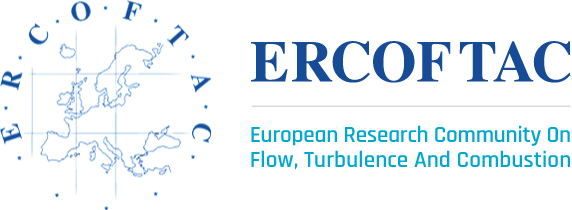IUTAM Symposium on "Unsteady Separated Flows and their Control"
Corfu, Greece.
June 18th - 22nd, 2007.
The physical mechanisms related to the onset of unsteady separation and of its control are key features for the understanding of fundamental aspects related to the dynamics of the near wall region and for the suppression of nuisible effects related with the flow unsteadiness (noise, loss of lift, dip-flutter, buffeting phenomenon?). A thorough knowledge of the physical mechanisms involved in the unsteady separation is a prerequisite for the appropriate modeling of related flows, that have a crucial importance in major industrial applications. The reasons for the appearance of unsteady separation are due to inherently unsteady effects arising from the amplification of instabilities and to forcing factors responsible for creation of adverse pressure gradients, leading to detachment and to a roll-up process.
These effects are of major interest to be analyzed in the context of incompressible, subsonic, transonic and supersonic flow regimes. In particular, the influence of compressibility on unsteady separation will be of interest in the present symposium.
The effects of unsteady separation on the global and local parameters of the flow are of considerable interest in the mentioned domains and are directly linked to the kind of coherent structures formed downstream and to feedback mechanisms between the upstream and downstream separation regions. The advances in the understanding of the physical mechanisms related to these unsteady phenomena are of great importance to achieve appropriate control methods to attenuate/inhibit the instability and the onset of turbulence. Advanced control methods will be examined in respect of their efficiency in attenuating/suppressing the unsteady separation, the flow-induced vibrations as well as the transonic regime unsteady phenomena related to buffeting and dip-flutter.
The main objectives on which the present symposium focuses are listed below. These correspond also to the symposium sessions:
- Experimental aproaches
- Theoretical aspects of flow separation
- Instability and Transition
- Compressibility effects
- Direct Numerical Simulation of unsteady separated flows
- Statistical and hybrid turbulence modelling
- Theoretical and industrial aspects of unsteady separated flow control
